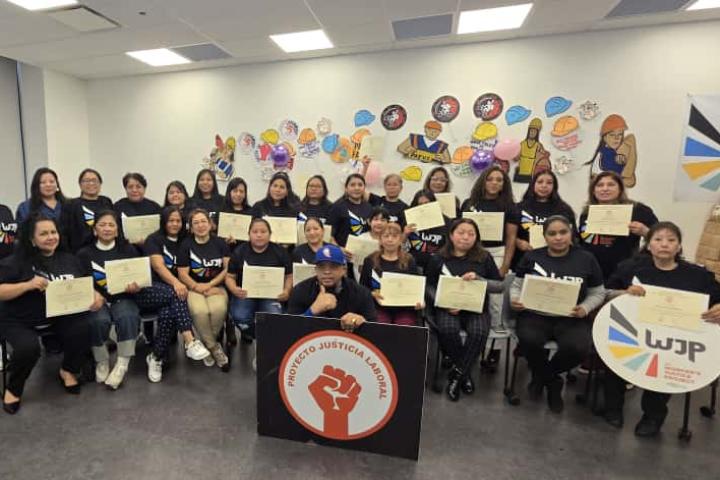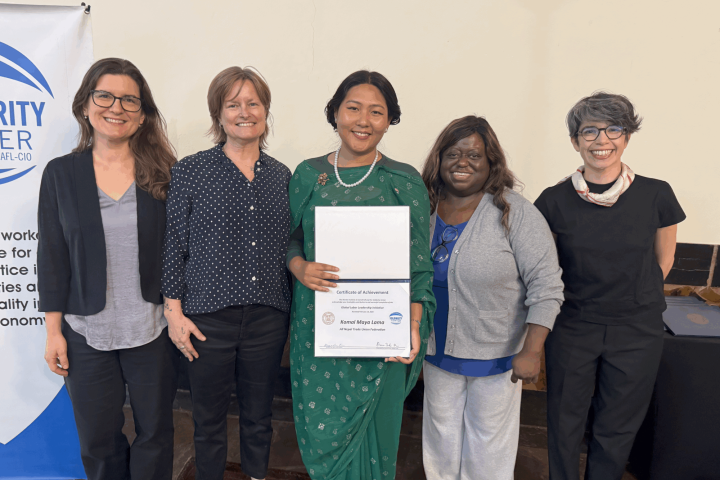Strikes up 52% in 2022: Labor Action Tracker
Strike numbers rose in 2022, reflecting a trend of more work stoppages in recent years by workers and activists in the U.S. labor movement, according to a report published today by the ILR School.

Findings for 2022 include:
424 work stoppages: 417 strikes and seven lockouts, up from 279 in 2021, a 52% increase.
224,000 workers: involved in work stoppages, up from 140,000 in 2021, a 60% increase.
4,447,588 strike days: measured by the duration of a strike multiplied by the approximate number of workers on strike.
Top industries by numbers of workers involved: educational services, health care and social assistance, manufacturing, retail trade, information.
The Cornell-ILR Labor Action Tracker is a comprehensive database of work stoppages. The project began in 2021 and is led by Johnnie Kallas, Ph.D. ’23, to provide a fuller picture of worker activity to inform policymakers, the public and others about workplace conflict. The data collection is unique to the ILR School, he said. Due to funding cuts by the Reagan Administration in the 1980s, the Bureau of Labor Statistics excludes work stoppages of fewer than 1,000 workers from its database.
“It is imperative to have reliable data on strike activity, by union and non-union workers in stoppages of all sizes, to keep journalists, policymakers, activists and scholars informed about labor activism and unrest across the United States,” Kallas said. “In addition to documenting whether a strike occurred, our tracker and annual reports provide detailed information on a number of variables pertaining to each action, such as industry, size, duration, and worker demands.”
Alexander Colvin, Ph.D. ’99, ILR’s Kenneth F. Kahn ’69 Dean and Martin F. Scheinman ’75, M.S. ’76, Professor of Conflict Resolution and Kallas’s Ph.D. adviser, said, “The Labor Action Tracker fills a vital gap in data on work stoppages in America that will be invaluable for research in this area. This is important information for policymakers. The growth in strikes this year is noteworthy, particularly in schools and higher education institutions.”
Kallas authored the report with Kathryn Ritchie ’24 and Associate Professor Eli Friedman, tracker faculty adviser.
Additional 2022 report findings include:

- Workers in the accommodation and food services industry organized more work stoppages in 2022 (144) than any other industry, accounting for over one-third of all events. However, these work stoppages involved about 7,000 workers or 3% of the total workers engaged in work stoppages in 2022.
- The majority (131, or 91%) of work stoppages in the accommodation and food services industry were led by Starbucks workers organizing with the Starbucks Workers United campaign or by fast food workers organizing with the Fight for $15 campaign.
- Most workers involved in work stoppages came from the educational services industry (135,380, or 60%), including 48,000 graduate students and postdoctoral workers in the University of California system; The number also reflects continued activism by K-12 educators and higher education workers.
- Non-union workers organized a high proportion of strikes (32%) in 2022. However, these strikes were smaller than work stoppages by unionized workers.
- Many work stoppages in 2022 – 46% – lasted one day or less, and two-thirds lasted fewer than five days.
The number of work stoppages and workers involved is less than the most recent comprehensive Bureau of Labor Statistics data from the 1970s. Also, the number of workers engaged in work stoppages in the past two years falls behind the recent organizing upticks documented by the government in 2018 and 2019. According to Kallas, more research would help make historical comparisons that account for the challenges facing striking workers and the labor movement.
The project’s methodology is documented here. Strike data are generated from existing work stoppage databases, news articles, social media posts and other public sources, and verified by the Cornell-ILR Labor Action research team.
The project, funded by the ILR School, can be followed on Twitter @ILRLaborAction.



